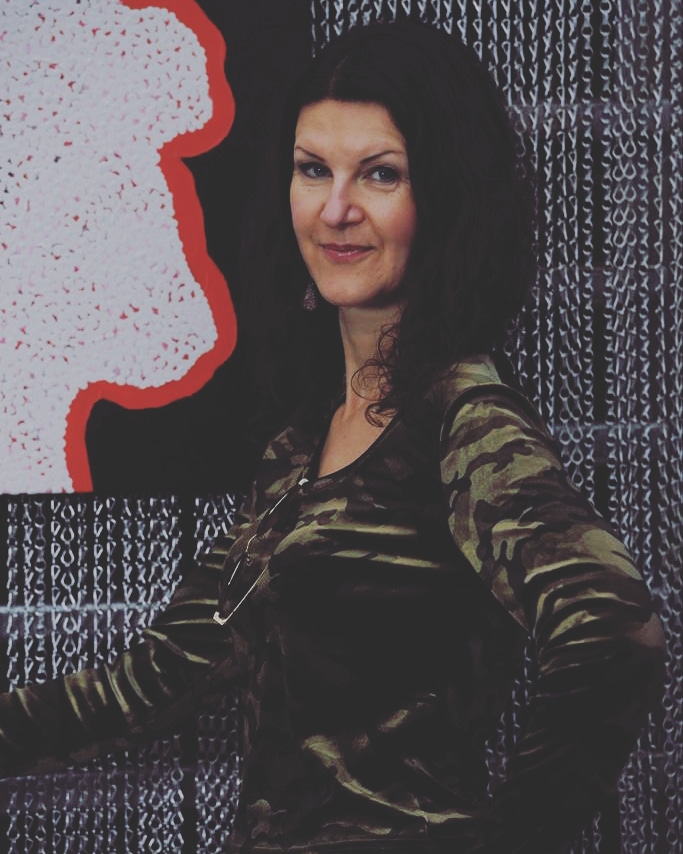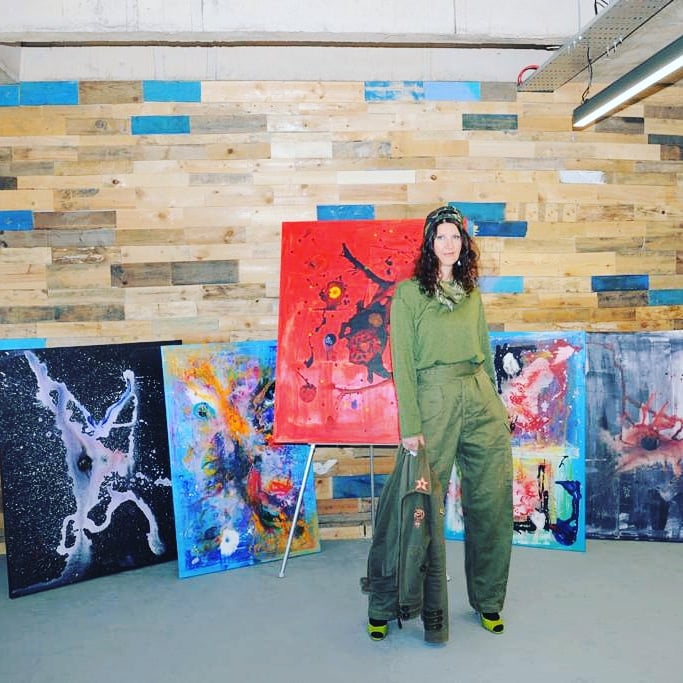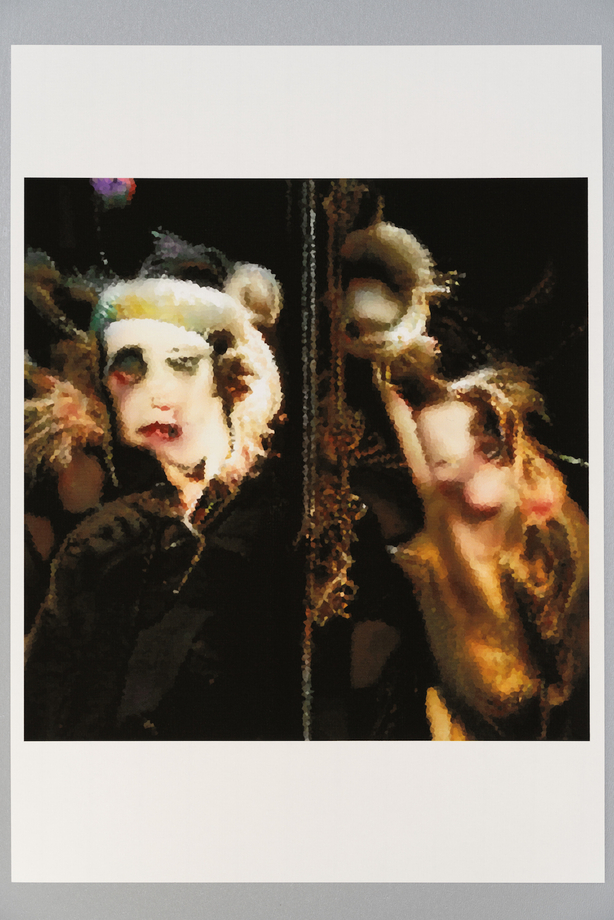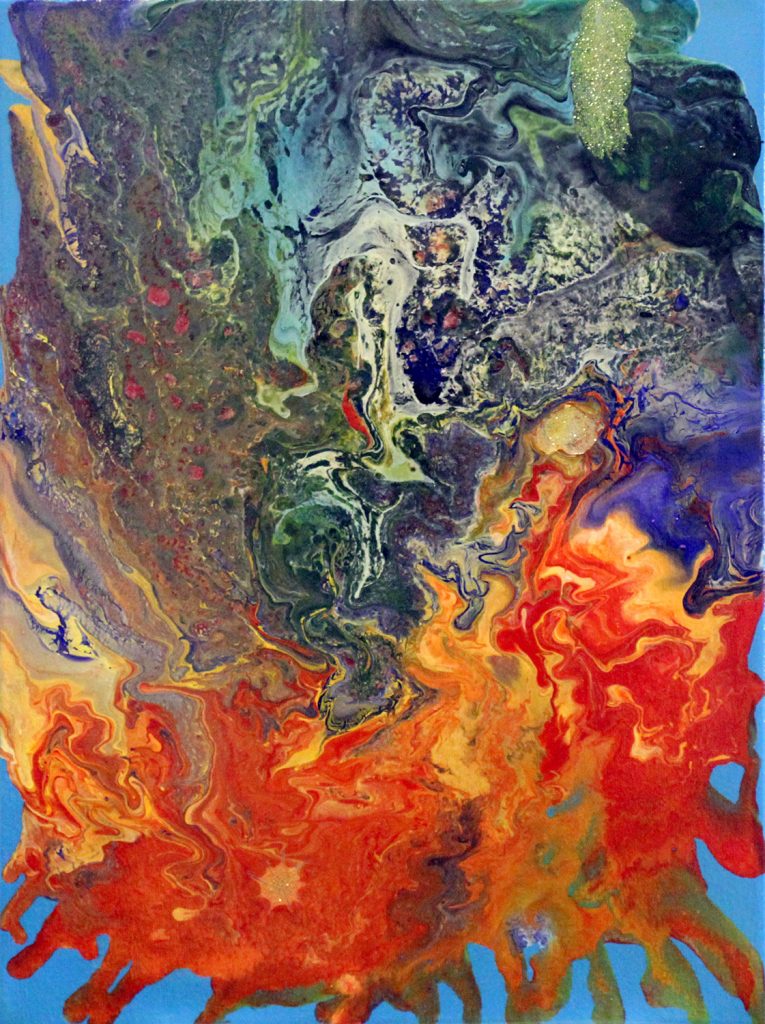Artist Rose Feller on Why She is Using AI to Blend Her Own Works With Imagery From Francis Bacon and Lucian Freud


Artnet Gallery Network

While on the surface the roles of artist and dealer can seem diametrically opposed, for Rose Feller, a Hungarian-born artist and the founder of Gloucester’s Agartha Gallery, supporting fellow artists is an intrinsic extension of her own creative process. Feller says that her gallery—which frequently collaborates with disabled and self-taught artists—is meant to be a welcoming place for all. This mission is a personal one: After leaving a physically abusive relationship in 2008, Feller found healing through her own art practice.
A maximalist artist who works with multimedia and recycled material, Feller recently embarked on a new series of works that use artificial intelligence technologies to reconfigure references from Feller’s own works, along with favorite art-historical references, such as Francis Bacon, Chaïm Soutine, and Lucien Freud.
Recently, we spoke with the artist and dealer about her use of technology and the role that the sublime plays in her creations.

Rose Feller, artist and founder of Agartha Gallery.
If you had to describe your recent work using AI in three sentences, what would you say?
Subject matter: locating the beauty that can be found in things that appear ugly or deformed. Approach: My sources are sometimes found on the internet, or other times reference my earlier works or other artists’ works, and after choosing my source imagery I work with AI technology to create the final image. Practice: I like to mix materials as I have done that since my childhood.

Rose Feller, Metamorphosis (2020). Courtesy of Agartha Gallery.
I am playing with the deconstruction of the word “figure” and its function through AI. I am creating a process of erasure and redefinition of the figure, making an image that appears to be ugly and disturbing due to its subjective appearance, but is at once beautiful aesthetically. In a sense, I want to help to cleanse the image of the bad of disturbing possibilities it has.
Who are the artists who most inspire you?
Francis Bacon, Lucian Freud, and Robbie Barrat, who also utilizes AI.
You’ve emphasized that Agartha Gallery is an inclusive environment, so I’m wondering how the gallery supports that mission?

Rose Feller, Phoenix. Courtesy of Agartha Gallery.
Yes, my own experiences of violence and abuse in various relationships have led me to connect with images that can sometimes seem disturbing. I am able to communicate with the image, able to feel myself in pain, and I want to change the image almost like a process of healing of the image. I do hope, also, to create more visibility and awareness of the issue of domestic abuse, and let people know that many women need a lot more help.
What roles do terror and the sublime play in your work?
